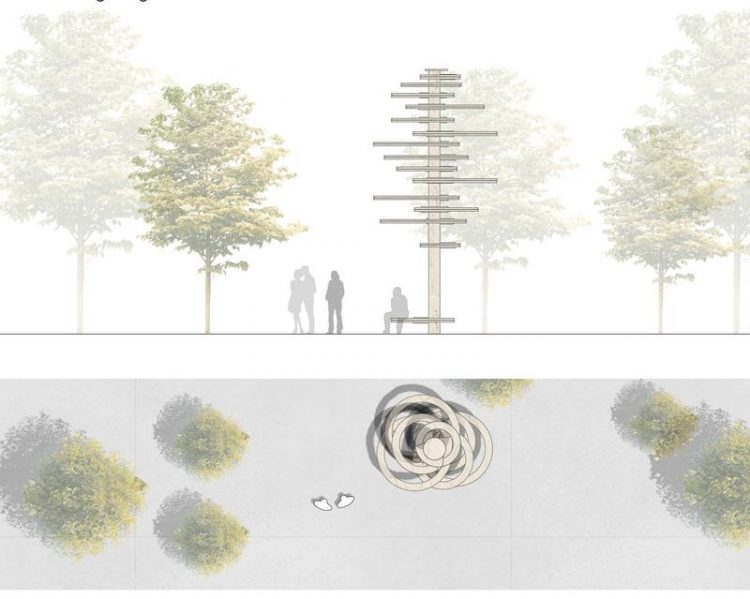5G transmission masts made of wood for an attractive and sustainable cityscape

The best designs are currently being constructed. Credit: AG Robeller/TUK
5G transmission masts have to be distributed throughout the entire area in order to ensure reliable data transmission. In order not to adversely affect the cityscape, prospective architects have dealt with this topic in a seminar.
“They had the opportunity to imagine what the streets of the future will look like,” says junior professor Christopher Robeller, who heads the Digital Timber Construction Working Group at TUK. “They designed their models of an environmentally friendly 5G base station out of wood.”
The Finnish company Ecotelligent Ltd. is also involved in the project and specialises in the development and construction of environmentally friendly wooden telecommunication masts and systems. “All of the students' designs were excellent,” Robeller continued. “Yet we had to choose the three best designs.”
The Finnish company is currently further developing these designs. These so-called smart masts will then be installed as part of a pilot phase in Kaiserslautern. Therefore the team around Robeller and Ecotelligent cooperates with KL.digital GmbH, an IT company of the city of Kaiserslautern.
This summer, citizens will be asked to choose the best model. If the masts meet expectations, it is possible to use them in other cities all over the world in the future.
“Cities still have to find out how to incorporate environmental impact and urban aesthetics,” says Robeller. Wood makes an ideal material in this respect. The students have considered this in their designs: The technology is hidden, but at the same time the city' s aesthetic image is taken into account.
These smart masts can be used at many locations, for example at intersections. Here they can also include additional sensors for intelligent traffic control.
Wood offers a further advantage: Compared to steel masts, the production process produces little or no CO2. In a next step, it would also be possible to dispense with steel connectors such as nails and screws for complex structures in which the masts could also be installed.
How this can be guaranteed is currently being investigated by the team around the architect from Kaiserslautern. Automatic carpentry machines may be used for this purpose, which can easily process the wood based on the corresponding software specifications.
Questions can be directed to:
Jun. Prof. Dr Christopher Robeller
Digital Timber Construction DTC
Phone: +49 631 205-2293
E-mail: christopher.robeller(at)architektur.uni-kl.de
Gyöngyi Mátray, CEO
EcoTelligent Ltd.
Phone: +358 50 355 0905
E-mail: gm(at)ecotelligent.fi
Dr. Martin Verlage
General Manager
KL.digital GmbH
Phone: +49 631 205-894
E-mail: m.verlage(at)kl.digital
Media Contact
More Information:
http://www.uni-kl.deAll latest news from the category: Architecture and Construction
Newest articles

Skull bone marrow expands throughout life
…and remains healthy during aging. Blood vessels and stromal cells in the bone marrow create an ideal environment for hematopoietic stem cells to continuously produce all blood cells. During aging,…

Future AR/VR controllers could be the palm of your hand
Carnegie Mellon University’s EgoTouch creates simple interfaces for virtual and augmented reality. The new generation of augmented and virtual reality controllers may not just fit in the palm of your…

‘Game changer’ in lithium extraction
Rice researchers develop novel electrochemical reactor. A team of Rice University researchers led by Lisa Biswal and Haotian Wang has developed an innovative electrochemical reactor to extract lithium from natural…



